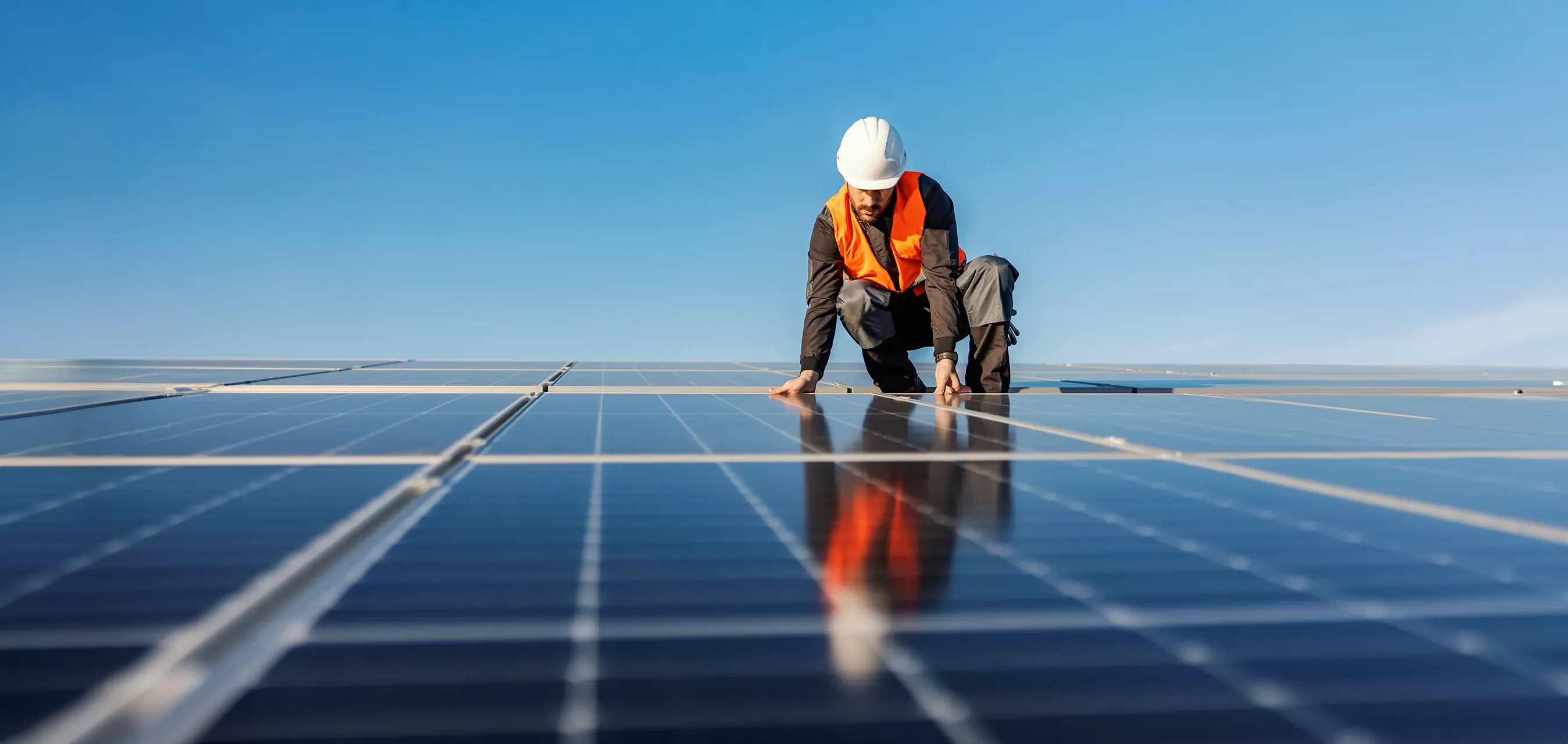Solar panels are an innovative technology that utilizes photovoltaic (PV) cells to convert sunlight into usable energy, offering an eco-friendly solution for power generation. They are crafted from semiconducting materials, typically silicon, which efficiently absorb sunlight and transform it into electricity.
TBS Solar offer a wide range of options of Solar panels including On-Roof and In-Roof systems, please contact our team for more information.
Similar to solar panels, solar roof tiles harness sunlight to generate electricity. However, they’re uniquely designed to blend seamlessly with traditional roofing, often mimicking the look and feel of standard traditional roof tiles. Some models are genuine roof tiles that have integrated solar cells built right in.
Unlike conventional solar panels, which tend to be bulky, solar roof tiles offer a far more aesthetic solution. Traditional panels can clash with the color and texture of classic roofing materials like clay tiles or natural slate, deterring homeowners focused on curb appeal.
Solar panels work by converting sunlight into electricity using a process called the photovoltaic (PV) effect. Here’s a step-by-step explanation of how they work:
1. Photons Hit the Solar Cells
- Solar panels are made up of many individual solar cells, typically constructed from silicon, a semiconductor material.
- When sunlight (composed of particles called photons) strikes the solar cells, it energizes the electrons in the silicon atoms.
2. Electron Movement Creates an Electric Current
- The solar cells are designed with two layers of silicon: one is positively charged (p-type) and the other is negatively charged (n-type).
- The energy from the photons knocks electrons loose from the silicon atoms in the negatively charged layer.
- The arrangement of the two layers creates an electric field that pushes the freed electrons toward metal conductive plates on the sides of the cell.
3. Flow of Electrons Generates Electricity
- The movement of electrons through the circuit connected to the solar cell generates direct current (DC) electricity.
4. Conversion to Usable Electricity
- The electricity is now usable for your lights, appliances, chargers etc.
5. Storage
- If you are producing more than the use, the electricity can go to a battery for later use or back into the grid.
Although they produce the most energy on sunny days, solar panels do not strictly need direct sunlight to work. Our Solar PV systems generate power from daylight, meaning they can still generate electricity on cloudy days or in shaded conditions.
However, solar panels cannot generate electricity at night since there’s no sunlight to drive the photovoltaic (PV) process. That’s where energy storage solutions, like batteries, can come in handy to use stored power after dark.
The number of solar panels needed depends on factors such as your energy consumption and the size of your property. Contact our experienced sales team for expert advice on the most efficient system to meet your needs.
Solar Panels can significantly reduce electricity bills, potentially saving homeowners hundreds of pounds annually.
The savings from installing solar panels in the UK depend on several factors like system size, location, electricity usage, and whether you're using a battery.
The average saving in the UK is 850 units per kWH generated.
TBS Solar provides a range of sleek solar PV solutions, including both In-Roof and On-Roof options, designed to deliver some of the most discreet solar arrays available on the market.
Solar PV systems may fall under permitted development rights, meaning planning permission might not be required for your property. However, certain properties, such as listed buildings, flats, or those located in conservation areas, may still require planning permission. For further clarification on your specific planning requirements, feel free to contact our team.
Reduced Electricity Bills – Solar energy is free to use, so any energy generated by your solar pv system reduces your requirements from the national grid. You will also get paid by your energy supplier for sending energy back to the grid!
Reduce Carbon Emissions – Solar panel systems produce zero emissions, as well as generating your own electricity from a renewable source, reducing your reliance on traditional fossil fuels.
Low maintenance – Once installed by one of our trained technicians, our solar PV systems will look after themselves! It is recommended to get the panels checked by a trained technician every 2-3 years.
Increased home value – it is estimated that solar panels can increase a home’s value by up to 2%
Energy Independence – Solar PV systems allows you to produce your own electricity, reducing dependence on external power sources, providing energy security for the future.
The simple answer to this question is no, our solar systems are designed for both new build and to retrofit to older properties.
Our experienced solar team will evaluate your roof prior to installation to ensure your new Solar PV system will meet your needs.
Solar battery storage offer a way to capture and store excess energy produced during the day for use at a later date such as during the night or to be resold at back to the national grid.
This ensures that no clean energy goes to waste and allows you to use your solar power anytime, even when the sun isn't shining.
